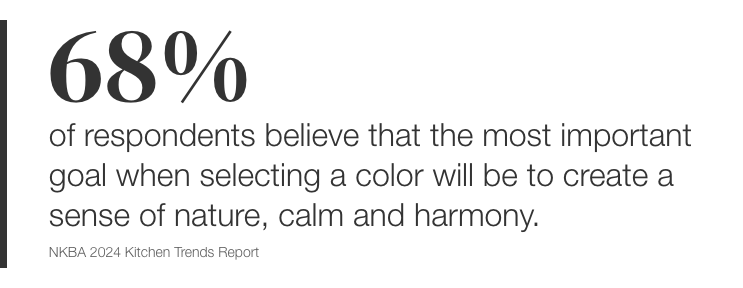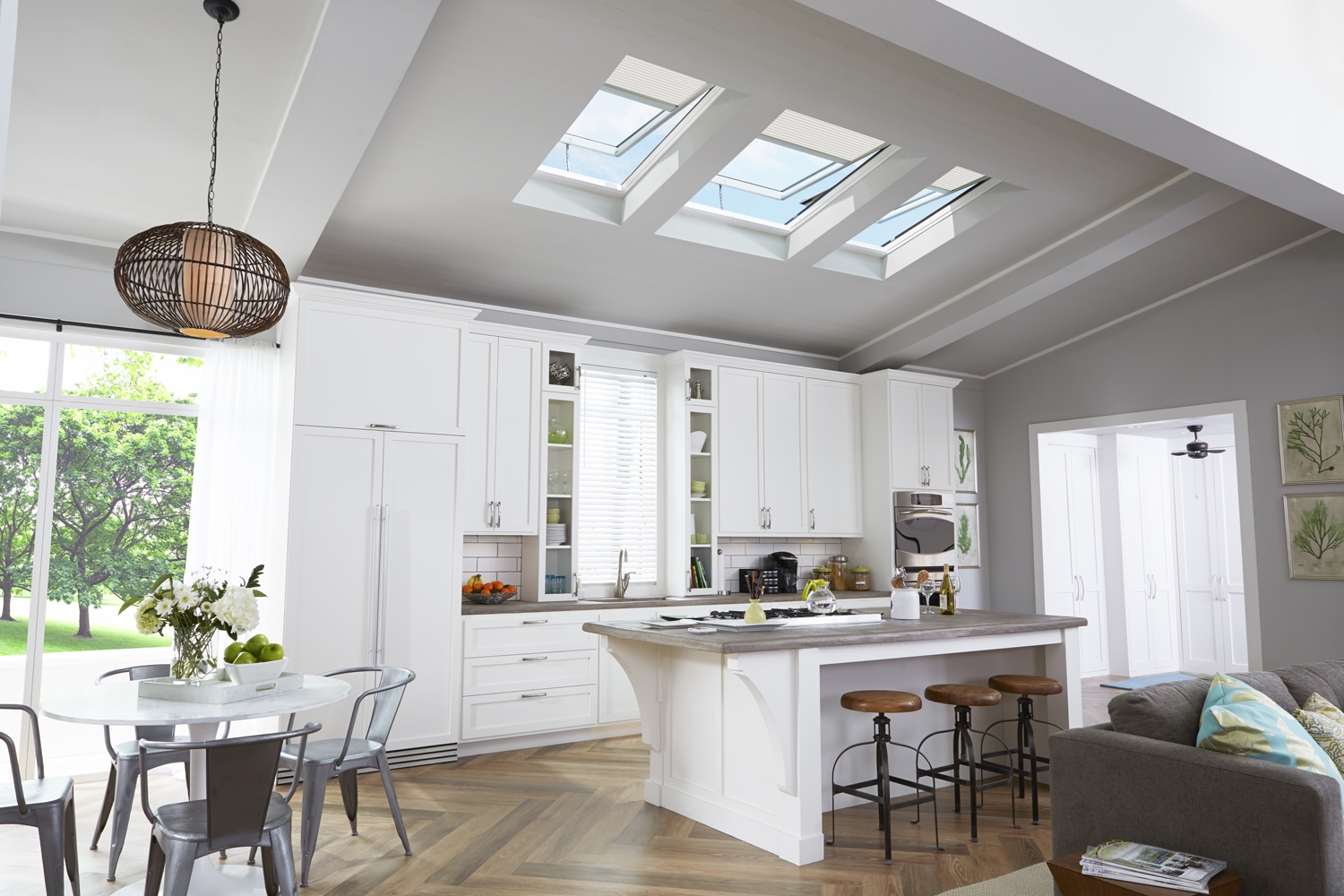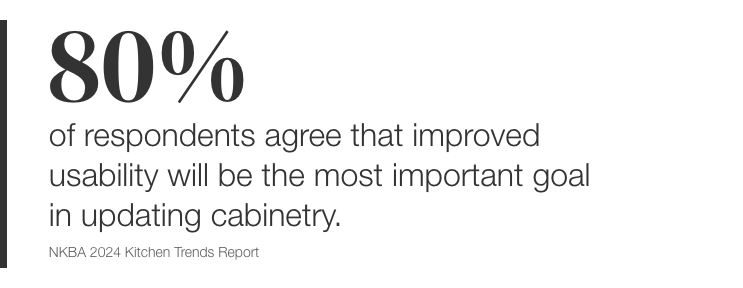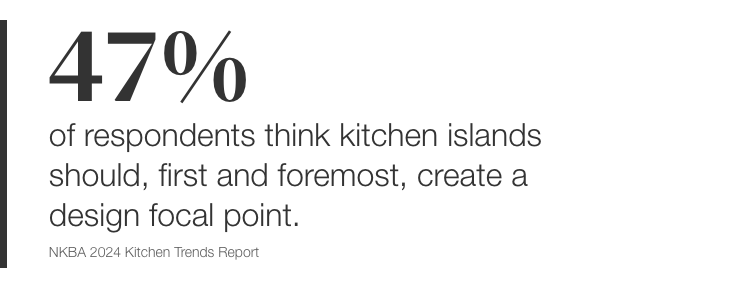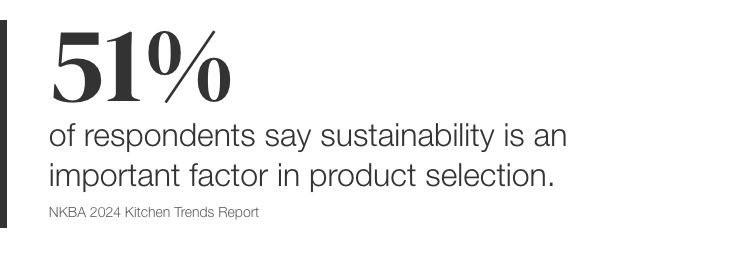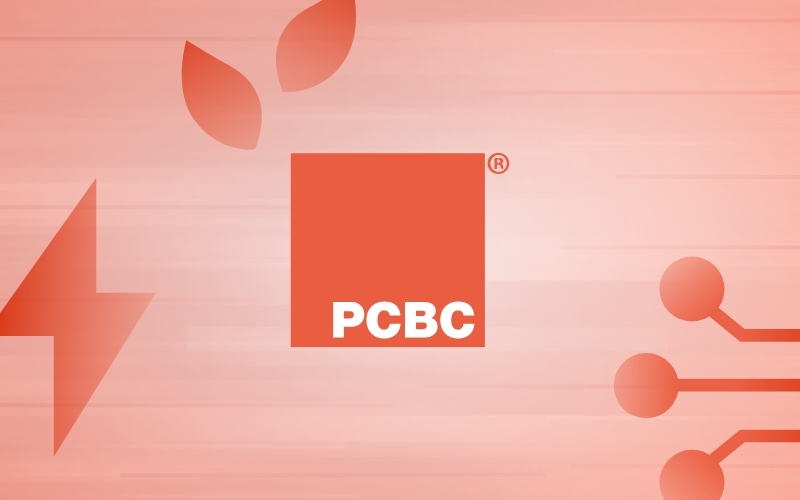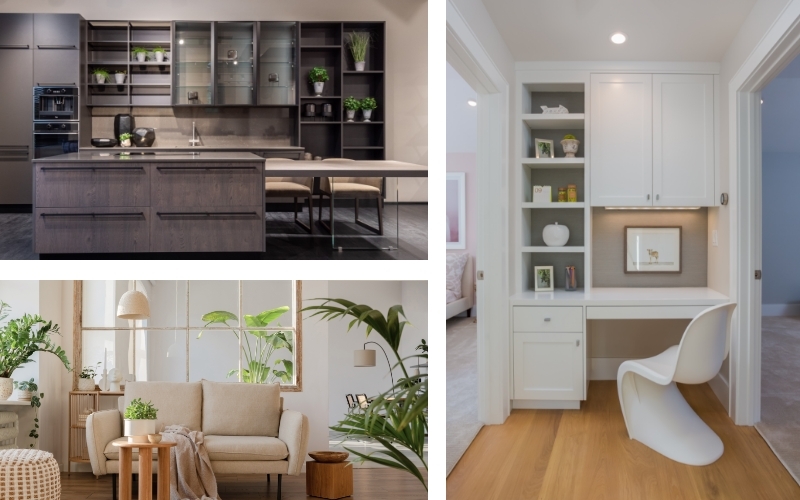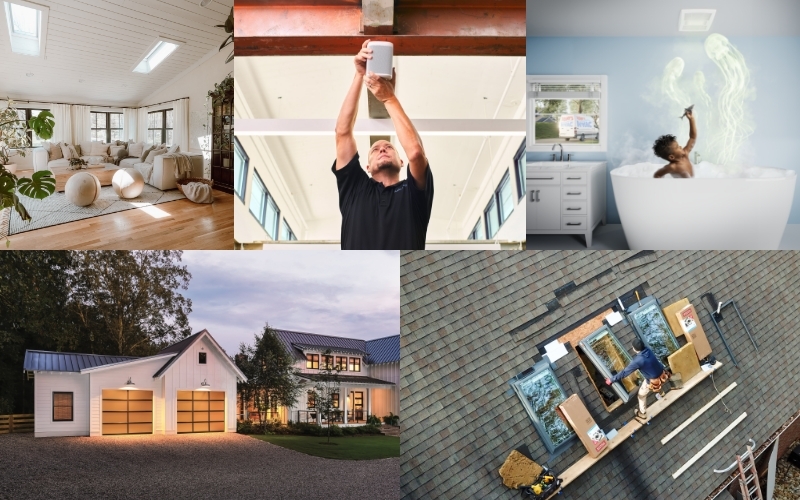Industry Trends
Marketing Insights
The National Kitchen & Bath Association recently released the 2024 Kitchen Trends Report, which contains insights from more than 630 industry professionals, including designers, contractors, manufacturers and architects. At Wray Ward, our Insights and Brand Strategy group leans into research from the NKBA and other partners to help our home and building category clients understand what trend projections could mean for their business.
So, what does the newest NKBA report have to say about kitchen trends shaping the next three years, and what does it all mean for your business? Here are four takeaways I found particularly interesting.
1. Homeowners want their kitchen to feel connected to the outdoors.
Over the past several years, we’ve seen an increased interest in biophilic design among homeowners. Simply put, people want to feel a connection to nature while in their homes — and the kitchen is no exception.
According to the NKBA survey, organic and natural design themes will be especially popular for kitchen remodels. From wood grain cabinets to earth-tone color palettes, design choices will be made with a connection to nature in mind.
